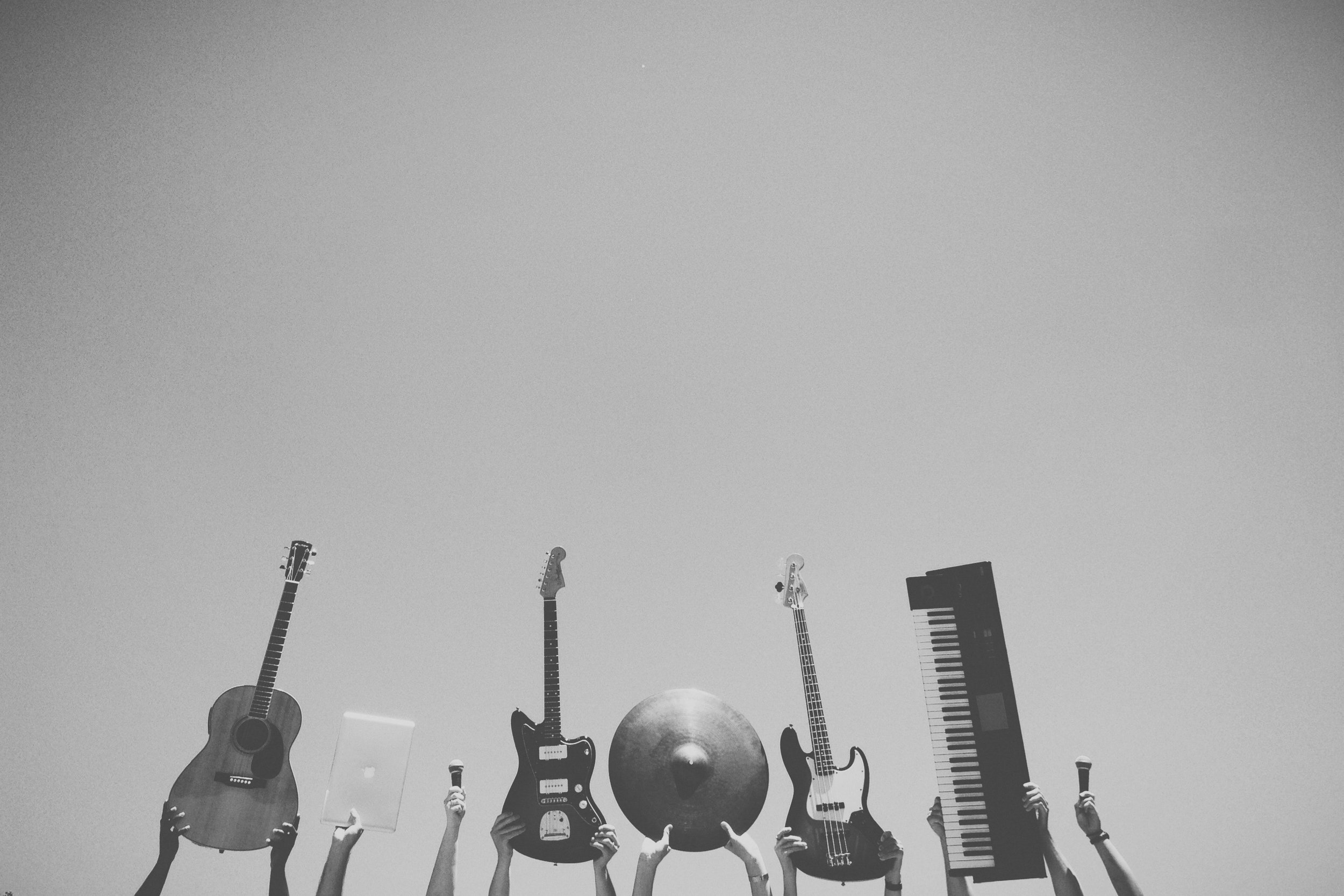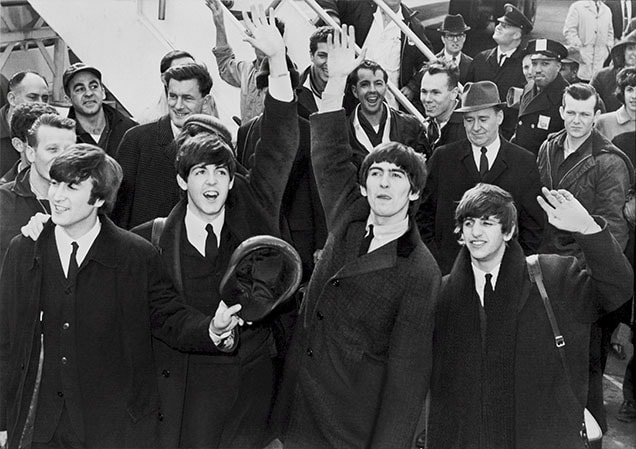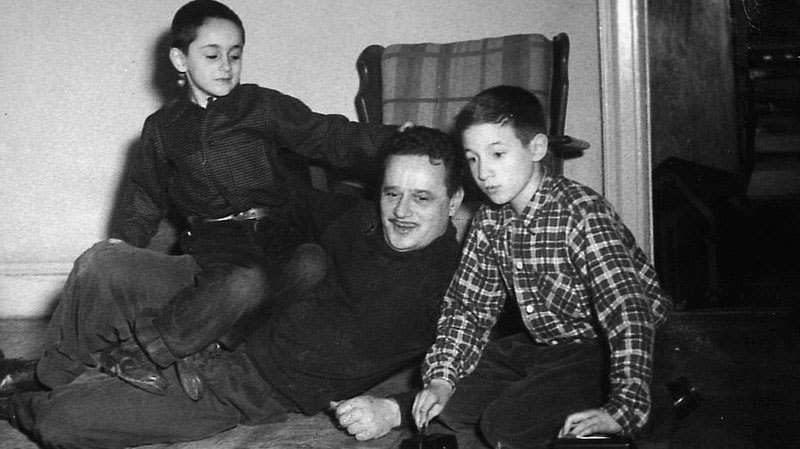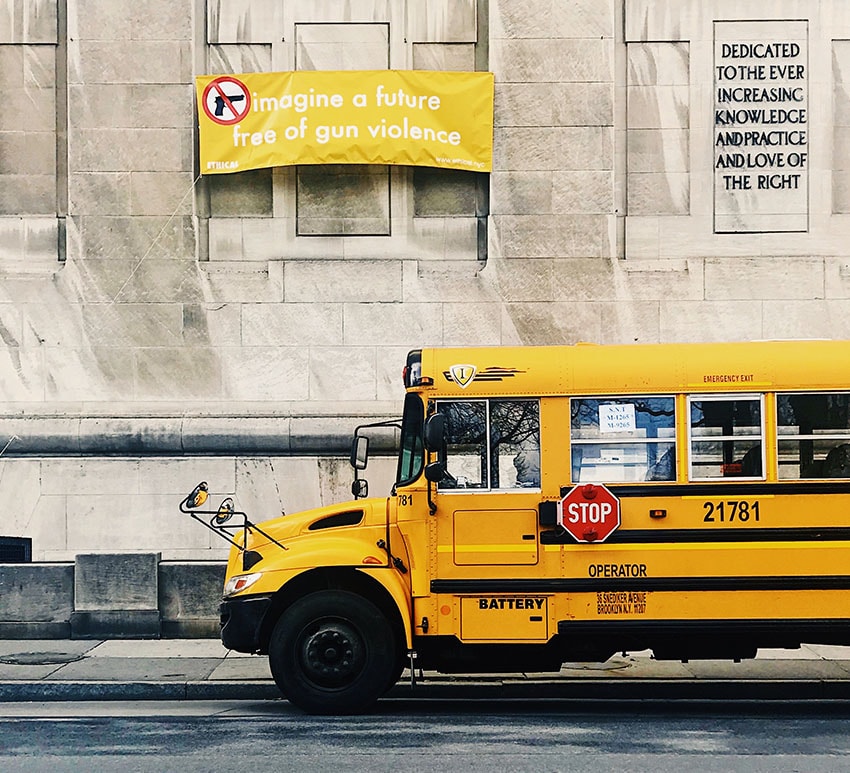Dry Brushing is in the Eye of the Beholder
Life Lessons From Painting: Your Self Portrait is Never Finished
Music and the Arts: A Privilege For a Lifetime
Something that truly bothers me is when someone believes they have no musical talent or that they used to play as a youngster but gave it up. This is sad because everyone can play music. After all, everyone has music pounding away inside of them in the form of a rhythmically beating heart. That is a solid start and a firm foundation upon which to build. It’s a great reason for people who have never played an instrument, or who, played as a youngster but stopped, to start or restart, playing.
“Why not?” I suggest. “Fifteen minutes a day and before you know it, you find yourself improving.”
It also bothers me when people say they are too old to begin to learn to play music.
“What do you mean, too old? You can play music until your last day on this earth. So why not?” You will be able to enjoy it for a long time.”
It’s also absolutely irrelevant how you “stack up” against other musicians. At the end of the day, the only thing that matters is whether you enjoy it.
I’ve always wanted to draw and paint but never made a real effort to learn how. So heeding my own advice, I began taking drawing and painting lessons.
It has been wonderful! Not only has it been loads of fun, but I have learned so much about the creative arts and lifelong learning. I also find myself looking at everything, from flowers, to food, to landscapes and faces, differently – considering colors, composition and perspective and wondering how to go about painting them.
Taking up painting has also reaffirmed that, like music, where you can interpret songs any way you please, in art, it’s okay to “color outside the lines”. That is the greatest lesson of the arts: that you can color outside the lines without penalty. It’s a safe place to test boundaries and explore the unconventional. The fact is, creativity can be taught and learned. But first, it has to be encouraged. The arts are a potent vehicle to encourage such creative, bold and fearless thinking. Mistakes can be embraced, modified and turned into something positive. For example, as a stream of paint slithered down my canvas, where I saw a “mistake”, my instructor saw an “opportunity”. “Don’t worry about it”, she said, “Embrace it, own it, work off it and use it to your advantage.”
It’s also confirmed my belief that it doesn’t matter what anyone else thinks of your art as long as you derive pleasure from it. That requires the boldness and courage to put yourself “out there”. I agreed to be a part of an “emerging artists” exhibit, where my work will be shown in a public gallery. This prompted a friend to ask, “How can you do that? You’ve only been painting for a few months?”
But why not? Who’s to judge whether your art or music is any better or worse than anyone else’s? As long as you enjoy the process, what does it matter?
But the greatest lesson I have learned and come to appreciate is that, like music, painting or drawing or being involved in other creative arts such as theater, is that these are things that you can do for the rest of your life.
The creative arts provide the opportunity and indeed, privilege, of being able to participate, learn from and enjoy it forever. You never have to “retire” from the arts. Unlike other activities, such as sports or sometimes, your career, the decision to “retire” is often not left to you.
I love the game of basketball and after my competitive career ended continued to play pick up games until age fifty. It was a very sad day to arrive at the inevitable conclusion that my body would simply no longer allow me to continue to play. “Retirement” from the creative arts is optional. You can do it whenever you want and on your own terms.
And, like a fine wine, you get better at the creative arts the older and more experience you get. Experience builds confidence and courage to continue to challenge yourself to create and put yourself “out there”. It keeps you vibrant and engaged.
One of the most fundamental responsibilities of our schools and education system is to instill in students a love of, curiosity for and mindset to embrace lifelong learning. That is why it is so important that our schools and communities invest in music and the arts. But it’s just as important to provide exposure to activities that can be practiced for a lifetime. And the institution through which we as a society can provide such opportunities and privilege is through our educational system
Being exposed to and participating in the arts is vitally important as a vehicle to teach creativity, build confidence and instill characteristics such as discipline and personal responsibility. And as such, everyone can and should enjoy that opportunity and privilege…for a lifetime.
'Strange Fruit' to 'Hey Jude': Music Protests Large and Small
For my money, WBGO, which airs out of Newark, NJ, is the world’s finest jazz station. Founded in 1979, WBGO is “a publicly supported cultural institution that preserves and elevates America’s music: jazz and blues.”
Due to the wonders of the internet, you can livestream WBGO anywhere in the world. In this case, I was at the Sun Gate at end of the Inca Trail in Peru. Looking down upon Machu Picchu, at an elevation of over 9,000 feet, a wild thought jumped into my high altitude addled brain. “WBGO? Up here?” So I dialed it up on my iPhone and was soon listening to WBGO deep in the heart of the Andes Mountains. What an amazing world we live in!
As our tour group was getting ready to move on, I heard only a snippet of an in-studio interview with a young jazz musician. I didn’t catch his name, but heard loud and clear him explaining the responsibility of artists to tell the stories of what goes on in society or culture. “As an artist”, he explained, “it’s part of the deal. You have a powerful platform. But you must wield that power thoughtfully and responsibly.”
There has been a lot in the news recently about athletes using their platform to advocate for civil rights and social justice. Similarly, artists and musicians have a rich history of doing the same. Their music or art provides them a platform to shed light on social norms, beliefs and attitudes.
Nina Simone articulated it well, “You can’t help it. An artist’s duty, as far as I’m concerned, is to reflect the times.”
John Lennon also referenced this responsibility. “My role in society, or any artist’s or poet’s role, is to try to express what we all feel. Not to tell people how to feel. Not as a preacher. Not as a leader, but as a reflection of us all.”
Or, in the words of Trent Reznor, founding member of Nine Inch Nails, “I have influence, and it’s my job to call out whatever needs to be called out, because there are people who feel the same way but need someone to articulate it.”
It reminded me of the time, long ago, when I participated in a musical act to protest and to comment on the times and express what we, as peers, felt.
The year was 1971.
Granted, our little act of activism wasn’t something that led to the kind of cultural change spurred by the arrival of Elvis, the Beatles or Chuck Berry, but within the halls of Little Falls School #1 it reverberated. It’s been argued that it drove Ms. Haynes, the school’s music teacher, to an early grave.
Rather than music class being a joyous and creative experience, Ms. Haynes wielded music like a club, virtually bludgeoning us into submission, all while primly perched behind her piano. She taught the school chorus “her” way, made us sing “her” songs that “her” chorus had sung forever. Songs like “It’s a Grand Old Flag” and “The Wells Fargo Wagon.” Nothing against either of those songs, but did they have to be on the song list every show, every year?
It all came to a head during rehearsal for the spring concert. After the third run-through of “Waltzing Matilda,” we were restless. The times they were a changin’ and we wanted in on it. We wanted to sing at least one song that was timely and relevant. And to us, that meant The Beatles. And Ms. Haynes represented what needed to change.
I raised my hand. “Do you know Hey Jude by the Beatles?"
“Of course, I know the Beatles,” she snapped, eyes piercing over wire spectacles. No matter how hard she may have tried to deny them, those long-haired lads from Liverpool managed to slip through the side door of Ms. Haynes’s musical domain. “I am, however, unfamiliar with the song.”
“It’s a great vocal song with a cool ending. We’d like to sing it” I replied.
“I don’t think the Beatles would be appropriate for the spring concert,” she responded.
But we were dead set on singing it. At the next practice, we asked again. Again, she refused.
So we walked. Five of us, including Skippy Brask, her prize student. We quit the chorus. Our demonstration caused quite a stir in our small suburban elementary school. A group of eighth graders walking out on Ms. Haynes? Quitting over the Beatles? Maybe it wasn’t Woodstock , punk rock or Chuck Berry, but it was our own little rock ‘n’ roll revolution. We drew a line in the sand at “Hey Jude.” We had no clue at the time, but we were using music’s transformational powers to make a statement to spur change.
Yes, I know. It wasn’t Billie Holiday performing “Strange Fruit”. But it did shake up our little grade school in our little corner of our world for a couple of days.
This comparison is by no means meant to trivialize the power of an artist or a song to shake up the world. To the contrary, it is to illustrate the broad, far reaching power to do so.
Abel Meeropol watches as his sons, Robert and Michael, play with a train set.
Courtesy of Robert and Michael Meeropol
There is no better song to sharpen that point than “Strange Fruit”. Written as a protest to the inhumanity of racism, it was penned and arranged by Abel Meeropol, a white, Jewish man from the Bronx after seeing a picture of a lynching.
Southern trees bear a strange fruit,
Blood on the leaves and blood at the root,
Black body swinging in the Southern breeze,
Strange fruit hanging from the poplar trees.
Pastoral scene of the gallant South,
The bulging eyes and the twisted mouth,
Scent of magnolia sweet and fresh,
And the sudden smell of burning flesh!
Here is a fruit for the crows to pluck,
For the rain to gather, for the wind to suck,
For the sun to rot, for a tree to drop,
Here is a strange and bitter crop.
This is one of the most powerful and haunting songs ever written. In 1999, Time magazine named it the “Song of the Century”. Clearly, it made an enormous difference in raising awareness and shaping the dialogue around the issue of racism in America.
Sadly, athletes and artists continue to face blowback and criticism for using their platforms to raise the collective consciousness of our populace regarding timely and relevant issues of the day. Far too many continue to believe and say that athletes, artists, entertainers and musicians should, “Shut up and play, paint, or sing”, and not comment on the important social, cultural or political issues that impact their lives in profound ways.
But the fact is, perhaps now, more than ever, we need artists, athletes, entertainers and musicians to continue to “reflect the times.” It’s “part of the deal”. And we will all be better off if they continue to meet one of their most fundamental responsibilities to wield that power thoughtfully and responsibly.
More about “Strange Fruit”
Billie Holiday Performs the Song
Guns for Teachers? How About More Violins for Students?
Originally published in Lancaster Online on May 25th, 2018
As I walked home from the March for our Lives rally for gun control and school safety in Lancaster, Pennsylvania’s Binns Park, being one of millions of participants in the estimated 800 events worldwide, I couldn’t help but think, “Maybe…possibly…this time will be different.”
The typical reaction to school shootings has been a burst of public outrage, prayers for the victims and their families, calls for change, pushback from the NRA and then soon forgotten as the next big news story emerges.
But this feels different.
It is being lead by young people with their boundless energy, pure ideals and the fact that they know how to effectively leverage social media. And not only have they not been bought off by the NRA, many of the young leaders of the March for Our Lives movement have stared the realities of school gun violence right in the face as they have witnessed first hand, their classmates being gunned down in cold blood by weapons of war. Theirs is a generation where, since the Columbine massacre in 1999, 187,000 students have experienced a shooting on their campus (Timothy Egan, New York Times, March 31, 2018).
That’s a very powerful combination.
If this time is truly different, it’s about time. Kids don’t feel safe in their schools and the rest of us don’t feel safe in our communities.
And if this time is truly different, lawmakers and community leaders will begin to allocate resources to address not only gun control generally, but also school safety, which is the focus of this essay.
If this time is truly different, school boards and community leaders will face some very important decisions regarding how to efficiently and effectively allocate those resources to make our schools safer. And the fundamental challenge is how to strategically “harden” the outside perimeter of our schools?
To date, the dialogue surrounding this challenge has fallen into three categories.
First, arm teachers. This however, is not a credible solution as the vast majority of teachers oppose it. My sister has been a second grade teacher for 35 years. While I love her dearly, if I was the parent of one of her students’, I’d be terrified of arming her. The fact is, more guns in the classroom will result in more accidental firings and deaths.
Second, hiring, arming and training additional security guards. And, finally, “hardening” the school perimeter with more checkpoints, barriers, metal detectors, video cameras and additional safety features.
While it can be argued that the second and third measures can make schools “safer”, the larger question is whether they will make them “better”. There is no denying that a consequential byproduct of hardening school perimeters will be that their look, feel and operations will become significantly more “militarized”.
While the point is not to downplay the need to harden school perimeters, there is another part of an intelligent, strategic and sensible approach to this problem that should also be considered. What will be the impact of children being forced to learn in a more militarized environment? And what can be done to mitigate those impacts?
Effective learning is greatly impacted by the environment and school atmosphere within which teaching and learning take place. That environment must be welcoming, nurturing and joyous. Those are not terms typically associated with armed guards, checkpoints, barriers and video cameras. If we are going to “harden” our school perimeters, we have a responsibility to our children to make sure we correspondingly invest in things that will “soften” the inside of schools. We must strategically consider appropriate measures to counterbalance that increased militarization by making the learning environment within schools more nurturing and joyous.
Fortunately, we know the types of educational activities and programs that make school learning environments more welcoming, nurturing, joyous and therapeutic: music and the arts. Not only do children learn better, but teachers enjoy teaching more when surrounded by beauty, creativity and joy. Research tells us that music and the arts create a more nurturing, joyous and therapeutic learning environment.
Stated more directly, rather than placing a gun in the hands of my sister, why not place more instruments in the hands of her students?
If our schools are going to become increasingly “hardened” and “militarized” on the outside, it is important that once within that militarized perimeter, the halls and classrooms within the school are joyous places where the thoughts of fear of violence or school shootings are relegated to the back of students’ minds. In such a “locked down” environment, the arts, more than any other educational tool at our disposal, can do that.
A result of these marches will likely be that lawmakers and school leaders will find money to add security personnel and safety measures that will result in a more “militaristic, locked down” school environment. At the same time, history tells us that they won’t hesitate, if money needs to be found in existing budgets to fund new programs or when programs need to be reduced or cut in a budget crunch, funding for activities such as music, theater and the arts often suffer.
Even without taking into account the need for additional security, it is educationally sound to invest in the arts as they are essential to providing an education worthy of the 21st Century.
Due to their universal nature and clear educational benefits, music and the arts are not simply an extra-curricular or co-curricular activity but can, if used strategically and effectively serve as the “glue” that holds together the entire core curriculum. For example, music is math. Music is reading. Music is language. And music is logic. As a result, music in some form can be incorporated into virtually any subject matter or academic curriculum to enhance learning and understanding thus leading to powerful learning opportunities across disciplines.
Additionally, we must instill in students the ability to navigate our increasingly multicultural, complex and integrated world. Music, as the universal language, clearly has the capacity to reach across cultural boundaries like no other activity. Another subject that must be considered a core aspect of a 21st century education is creativity. The ability to think outside the box to address increasingly complex issues and challenges and to make new and different connections that lead to exciting discoveries and knowledge will be one of, if not the most important characteristic that students must possess to be successful in a globalized world. Music is our most effective educational tool to encourage and develop creativity. Music and the arts are also therapeutic, providing young people who feel alienated, isolated and confused within the traditional educational setting opportunities to “find themselves”. The arts offer activities and a community that makes them feel they belong as opposed to feeling like an outcast. One of the most valuable characteristics of the arts is that they are inclusive, forgiving and nurturing. It’s a place of belonging. There is tremendous value in that. I‘m no social scientist, but my guess is that many of the school shooters feel they are ostracized and outcasts.
Enhancing school safety in an age of easy access to deadly firearms in a pervasive gun culture is a complicated issue. Simply increasing investment in music and the arts in our schools will certainly not solve the problem. That said, neither will a collective knee-jerk reaction to simply further militarize schools.
If this time is truly different, significant resources to enhance school safety will very likely be coming down the pike. That being the case, it is critical that school and community leaders allocate those resources wisely. Rather than simply adding more armed guards, check points and metal detectors and then wiping our hands clean and stating our mission of making our schools “safer” accomplished, we must think outside the box to make our schools not simply safer, but better.







